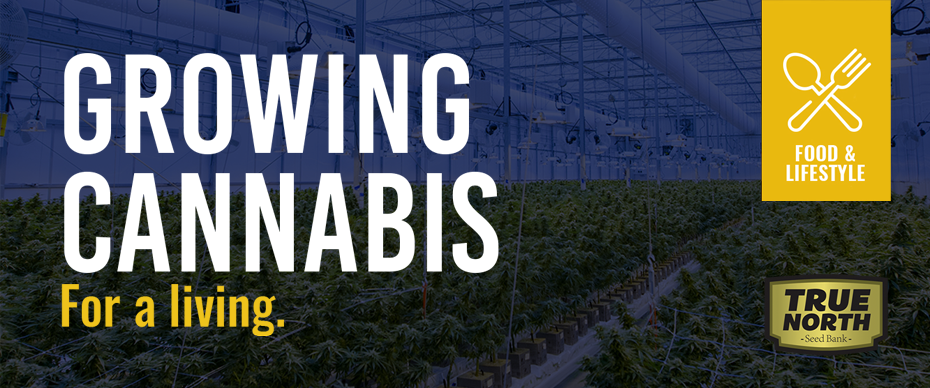
The cannabis industry has been exponentially growing the last few years, leading to several emerging businesses.
Growing cannabis is lucrative, with annual salaries ranging from $70,000 to $125,000 for master cultivators. However, the job comprises heavy responsibilities, such as managing employees and regulating business compliance.
While growing cannabis is enticing, several considerations and drawbacks should be considered. Initial investment capital is also required to start a growing cannabis business.
If you are interested in growing cannabis for a living, keep reading!
What Do You Need To Grow Cannabis For A Living?
Good knowledge of several state and federal regulations is required to prevent any altercations with the law.
Furthermore, it can be challenging to keep abreast of current regulations.
While cannabis is legal in several states, it does not necessarily mean you have as many plants as you wish.
For instance, California allows up to 99 plants to grow if the grower has a Medical Marijuana Identification Card (MMIC).
Besides, there are several state laws that growers must be aware of:
- Cannabis cultivation is not permitted in suburban areas.
- Cannabis farms cannot be within 1,000 feet of a house with children.
- Cannabis farms cannot be within 1,000 feet of a local park, school, zoo, or church.
- The number and definition of ‘mature’ plants vary by state.
Additionally, ‘synthetic’ fertilizers are subjected to regulations regarding their disposal.
Growers may be charged for intentionally polluting groundwater, and the act is considered terrorism.
To obtain healthy plants and a high yield, growers must be knowledgeable and skilled regarding:
- Efficiently using fertilizers.
- Best growing medium.
- Aeration and best grow lights.
Other skills that will help in managing growing cannabis include plumbing, electrical, and horticulture.
Initial Investment For Cannabis Operation
According to Cannabis Business Plan, a 7,700 square feet warehouse for 1,000 plants requires an investment capital of $830,000.
The template includes all costs, including equipment, rent, and salaries.
However, the cost will also depend on the cultivation method, the strains used, and your location.
Operating and direct costs for cannabis cultivation include electricity bills.
It is worth noting that your electricity bill will include the wattage of lights used and the electricity used for fans, pumps, and other electrical devices.
According to the Cannabis Business Plan sample, an average of $55,000 is accounted for yearly electricity costs only.
When adding all direct costs, namely electricity bills, nutrients, direct labour, lab testing, packaging, and taxes, the total adds up to $180,700.
The business plan did not account for other expenses such as administrative, marketing, and distribution taxes.
How Much Should You Expect To Make In Your First 3 Years
Cannabis cultivation jobs vary. Your income will depend on your skillset and experience.
Average assistant growers make about $20.55 per hour, while master growers get $125,000 or more.
A grow-op leader’s salary is well deserved as the job is both time-consuming and requires both professional and personal commitments.
According to a Production Grower survey, growers have an average salary of $125,000 per year.
The average salary for a master grower ranges from $85,000 to $145,000, depending on the operation's size.
Mater growers must endorse a heavier responsibility for managing all employees, and interacting with compliance inspectors, the DEA, and state law enforcement.
In contrast, an assistant grower must ensure that cloning, feeding, planting, and watering are correctly done.
Moreover, participants in the upcoming 2020 State of the Cannabis Cultivation Industry Report have hit a growth plateau.
The projected revenue is expected to increase to $3.74 million in 2020 compared to $3.73 million in 2019.
Half of the participants reported lower revenue in 2019, while the rest reported higher revenue in 2020.
However, in 2020, more cultivators reported revenue greater than $1 million in 2020 compared to 2019.
Taxes For Cannabis Operation
The Internal Revenue Service (IRS) dedicated an entire webpage to tax policy for the cannabis industry – specifically marijuana businesses – in September 2020.
According to the IRS's new webpage, federal courts have consistently upheld the IRS's determination that income earned from both state’s non-compliant, compliant, or illegal cannabis sales is subject to federal income tax in the United States.
The IRS reminds "businesses that traffic marijuana violates federal or state law" of the limitations imposed by Internal Revenue Code (IRC) section 280E.
The IRS's inclusion of tax policy guidance is a significant step toward recognizing the cannabis industry as substantial enough to warrant the establishment of a formal tax collection and reporting policy.
The establishment of a dedicated web page on IRS.gov is a significant signal of increased scrutiny and potential developments aimed at reducing taxpayer uncertainty and thereby increasing tax compliance.
The site contains information on various pertinent topics, including filing taxes and making large cash payments.
It's a step in the right direction toward resolving the IRS's concerns about the marijuana industry.
Drawbacks of growing cannabis for a living
While growing cannabis seems a lucrative business, several drawbacks must be considered.
Fierce Competition
Several states have now legalized cannabis, providing more growth opportunities for growers.
They see an opportunity in increased demand for hemp cultivation to create and sell.
CBD oil is a hot property, and more farmers are entering the CBD sector for higher profits.
One way to tackle this challenge is to consider various markets, including hemp oils for beauty and skincare products.
Environmental Impacts
Assessing the environmental impacts of rising cannabis cultivation is essential.
Gaica.com showed that cannabis cultivation causes damage to the environment in several ways.
Additionally, in recent years, cannabis cultivation has shifted to tribal lands that are undetectable.
This tends to impact the wildlife.
Harvesting Can Be Tough
While it's a basic farming process, harvesting and post-processing are difficult.
Various conditions like a lack of nutrients, insects, weather, and light exposure can significantly affect the yield.
Well-equipped machines can assist with post-harvesting cleaning.
Knowledge about the best storage conditions, such as ideal climate and technology, is also essential for solving this problem.
Benefits of growing cannabis for a living
The demand for cannabis is increasing due to the plant's diverse applications.
Due to the plant's versatility, scientists are constantly attempting to use it as a sustainable and environmentally friendly substitute for various materials.
Cannabis is one of the best crops for efficient vertical farming and achieving incredible results and profits.
It has the potential to reduce carbon emissions and provide a sustainable solution to meet increased demand.
The value of cannabis-based products will continue to rise in the future, demonstrating the segment's enormous potential.
The body of research devoted to determining the full range of cannabis applications is rapidly growing.
The expanding scope of research has facilitated its expansion in a variety of sectors.
From medicine to beauty and textiles, diverse sectors invest resources to maximize the value that the plant can create in their area.
Cannabis is a highly adaptable plant that thrives in various climatic conditions and can survive in all but the most extreme climates.
It is a relatively simple crop to grow, even for inexperienced farmers, with the right seeds and proper care.
About the author: Heather Burton
Heather lives with her husband and two children in beautiful British Columbia. Her passion has always been to enhance the lives of others by helping them reach their business goals.
Content management is her specialty, and writing is what she does best. Working specifically in the cannabis market, Heather strives to help dispensaries, patients, doctors, manufacturers and recreational users by giving them the voice they need. When she is not writing, you can find her anywhere outdoors and away from the screen.












